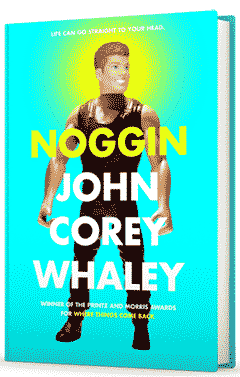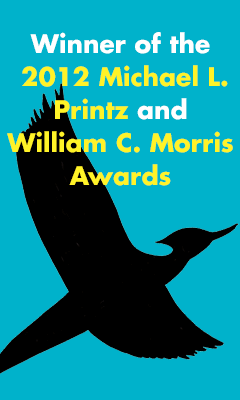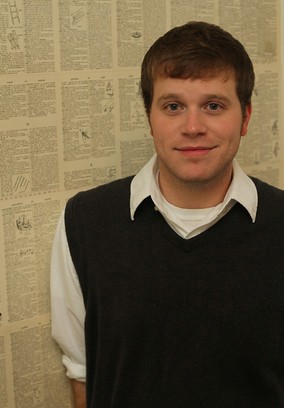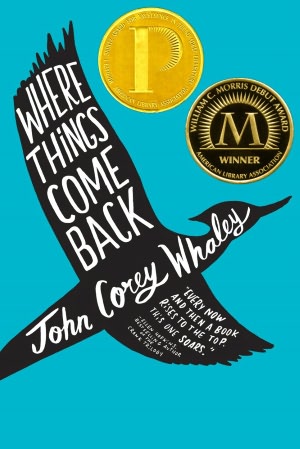Noggin
by John Corey Whaley
Life has gone on without Travis, whose body was invaded by acute lymphoblastic leukemia, and who was offered an opportunity to have his head cryogenically frozen ("You want to freeze just my head?" he asks Dr. Lloyd Saranson from the Saranson Center for Life Preservation). With nothing to lose, Travis agrees, and "comes to" with his healthy head transplanted onto a healthy body (donor Jeremy Pratt had a fatal brain tumor). Travis has been "away" for only five years, yet the social and emotional divide between 16 and 21 is vast.
Travis had expected to come back in the far future ("Where were the jetpacks?" he wonders), when everyone he loved would be gone. Instead, the girl he loves, Cate, is engaged to someone else; his best friend Kyle has gone back in the closet; and his parents are keeping a secret. The only refreshing new addition to his life is Hatton, who, on Travis's first day back at school, while Principal Carson is telling the students how privileged they are to "witness one of the greatest miracles of modern science right here at Springside High," calls out "Noggin!" It's a cathartic release for Travis, and he and Hatton become fast friends.
Hatton often provides a reality check for Travis, as he attempts to put his life back into place--the place it had five years ago. And so does Kyle, who eventually comes around to Travis; Kyle, Hatton and Travis form a strong friendship. But Cate remains elusive. Lawrence Ramsey, a man from Cleveland, Ohio, who was revived six months before Travis, proves to be another indispensible confidant. Lawrence's wife waited five years for him. Travis, convinced he can win back his beloved Cate, tries everything, including a desperate and darkly funny scene in which he proposes to her practically in front of her fiancé.
The novel brims with gallows humor: "They say high school is the best time of your life. Well, it wasn't the best time of either of mine," observes Travis. At another point, Kyle convinces Travis to accompany him to a college party, where Kyle assures him that college girls will find Travis "adorable": "I definitely wasn't going to go flashing my scar around like some cryogenic gigolo," he thinks. At Thanksgiving, when Travis gets together with extended family, his cousin makes a hilarious observation about the seating arrangement: "If someone in this family gets frozen for a bunch of years, they still have to sit at the kiddy table until their new body is old enough to graduate?"
Whaley makes his hero's implausible situation absolutely convincing. Aside from science today lagging behind the world that Travis inhabits, we believe the emotional dilemma in which Travis finds himself. Having come face to face with his mortality at 16, as cancer hijacked his body, Travis finds himself wanting to play out his adolescence, while his playmates have moved on. "I had to stop thinking there'd be a day when everything I wanted, everything I had, would be set back perfectly into place," he realizes. But coming to that realization and accepting it are two different things.
Whaley taps into the central questions of adolescence in Noggin just as he did in Where Things Come Back. Travis's five-year absence echoes 15-year-old Gabriel's disappearance in Whaley's first novel. The author explores the fine line between living in faith and living in the present: Do you tread water if you believe that he will return? Do you try to go on, if you think he won't be back?
The questions lurking behind Travis's sometimes rash actions plague all teenagers. What happens when, in a friendship, the two parties grow at different rates? Is there enough there to salvage? Can you wait for the other to catch up, or is the distance too great? Is it different for romantic relationships than it is for platonic ones? Can you teach yourself to expect less? Does Travis love Cate for her ability to remain true to herself and live out her life, or does he wish she'd waited, as Lawrence's wife did? Would Cate be the same person if she had waited? Ultimately this insightful story explores the challenges of intimate relationships and managing expectations.
The ending of the novel, like that of Whaley's first book--leaves it to readers to decide how things turn out. One thing is certain: Whaley imparts much wisdom here, and asks teens to think about the life they want to make for themselves. --Jennifer M. Brown









 In both Where Things Come Back and Noggin, you play with the idea of second chances. What draws you to this theme?
In both Where Things Come Back and Noggin, you play with the idea of second chances. What draws you to this theme?